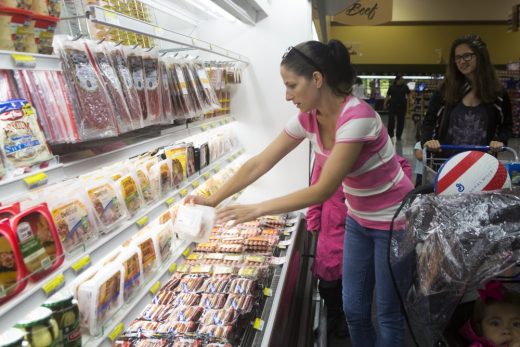By Casey Quinlan | Pennsylvania Capital-Star
Consumers are getting some relief from higher prices as core inflation, which excludes food and energy, continues to show signs of cooling — an encouraging sign for the U.S. economy, according to economists.
The U.S. Department of Labor’s report last Thursday showed the consumer price index rose 0.2% in July, in line with expectations, and 3.2% in the past year compared to 3% in June. Despite that slight uptick, economists say that it’s still good news for the economy overall and for consumers.
This is the second month core inflation has reached pre-pandemic levels, according to an analysis of U.S. Department of Labor data by the Roosevelt Institute.
“We now have two straight months of low, honestly, quite normal levels of inflation,” Kitty Richards, acting executive director of the progressive think tank Groundwork Collaborative, said. “That’s a huge drop from last summer’s peak. And that is something that we should be celebrating, especially given that it has happened in the context of growing real wages and a job market that is still really delivering for American workers. I’m really glad to see that in the inflation report.”
Food prices increased 0.2% from June to July and 4.9% from July 2022. However, egg prices, which families have been complaining about at the checkout line, are falling. Milk prices have also continued to decline. Frozen fish and other seafood prices also fell in July after increasing a bit in June.
David Ortega, a food economist who is an associate professor at Michigan State University, said food price inflation is starting to moderate.
“A 3.6% increase in grocery prices is a welcome relief from what we saw last year. We were talking about double-digit increases, year-over-year for grocery prices,” he said. “They peaked in August [of 2022]. There’s signs that things are moderating and, and they’re definitely improving.”
But it’s still important to consider that these changes, while promising, are not necessarily affecting the average American’s experience of prices at the supermarket in a big way, he cautioned.
“If you talk to consumers, people are like, ‘Things are still expensive at the grocery store.’ And that’s correct because inflation is the rate of increase in prices over a period of time,” he said. “Just because the rate of increase starts to come down, it doesn’t mean that prices are coming down or that things are necessarily getting cheaper. It just means that they’re not increasing in price as quickly.”
Some factors still adding inflationary pressures include climate change and Russia’s war in Ukraine, Ortega said.
“We’ve seen some of those factors start to improve and in some cases, not really be much of a problem like in the case of bird flu for egg prices. But we still have some factors at play that are still adding inflationary pressures ….,” he said. “That’s why inflation has been very persistent. And there’s also a demand story that we’ve seen, especially in the data that we have for last year, that consumer spending on food has been pretty strong.”
Housing costs lagging
Thursday’s inflation numbers have implications for the Federal Reserve’s efforts to bring inflation down to its 2% target. In July, the Fed raised interest rates by 0.25% to the highest it has been in 22 years.
Fed Chairman Jerome Powell said in a July press conference that the Fed was waiting to see whether the June CPI report, as well as other economic data, was a blip before deciding to pause the raising of interest rates. Fed meeting details show that officials wanted to see how interest rate hikes, as well as the spring bank collapses, were affecting the economy before making another policy decision.
Powell said the Fed would be watching this CPI report and the following one to see if there is a trend in the moderation of inflation as it considers its next decision.
“Between now and the September meeting, we get two more job reports, two more CPI reports …,” he said. “All that data I recited we will be looking at all that and making that assessment then. Really, we did have that one good reading but it is just one reading as everybody knows and we’ve seen this borne in the data. Many forecasts call for inflation to remain low but we just don’t know until we see it in the data.”
Shelter also continues to have a significant effect on inflation. It made up 90% of the increase this month according to the U.S. Bureau of Labor Statistics. But there is additional context to consider for shelter data since it is a lagging indicator, Richards said.
“Affordability of housing is a huge concern for Americans … The data is really telling us shelter costs in the CPI lag by up to a year and market data, which is much more current, shows that housing costs have cooled dramatically since last summer,” she said. “…What that means is that inflation right now is actually lower than the CPI headline number.”
Richards said that because prices for all items without shelter is only 1% for the past 12 months, the Fed may take that data into consideration in September when it makes its next call on interest rates.
“That’s good news. But we also need to start to ask whether the Fed continuing to pursue a 2% CPI inflation target aggressively has a real risk of overshooting.”
There’s only so much effect the Fed can have on demand for food, however, Ortega said.
“The raising of interest rates has little effect on demand for food, especially at the grocery store because food is a necessity. … That may make it more difficult for people to go out and eat at restaurants or maybe not splurge as much when they go to the grocery store. But that is not going to have that significant of an effect on the overall prices and, and what we’re seeing with overall inflation.”









